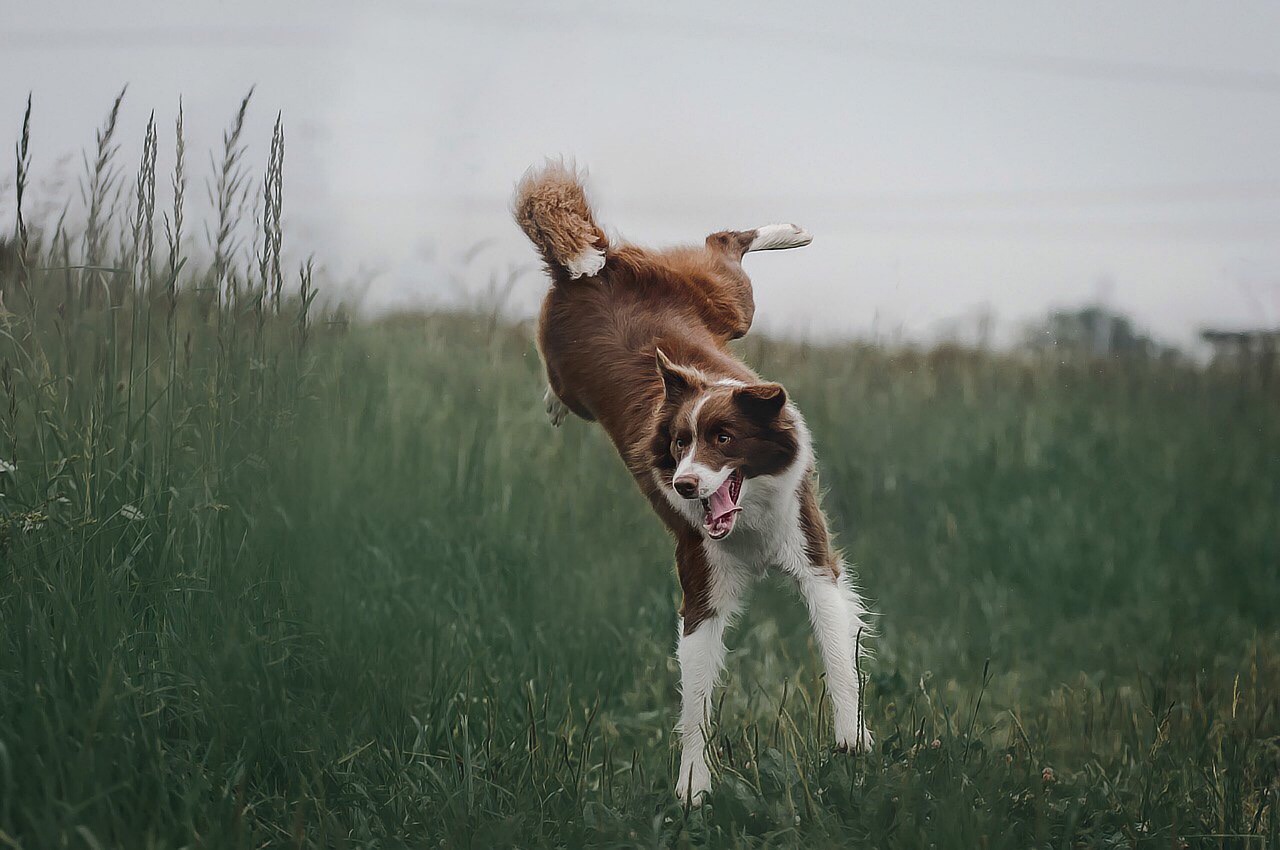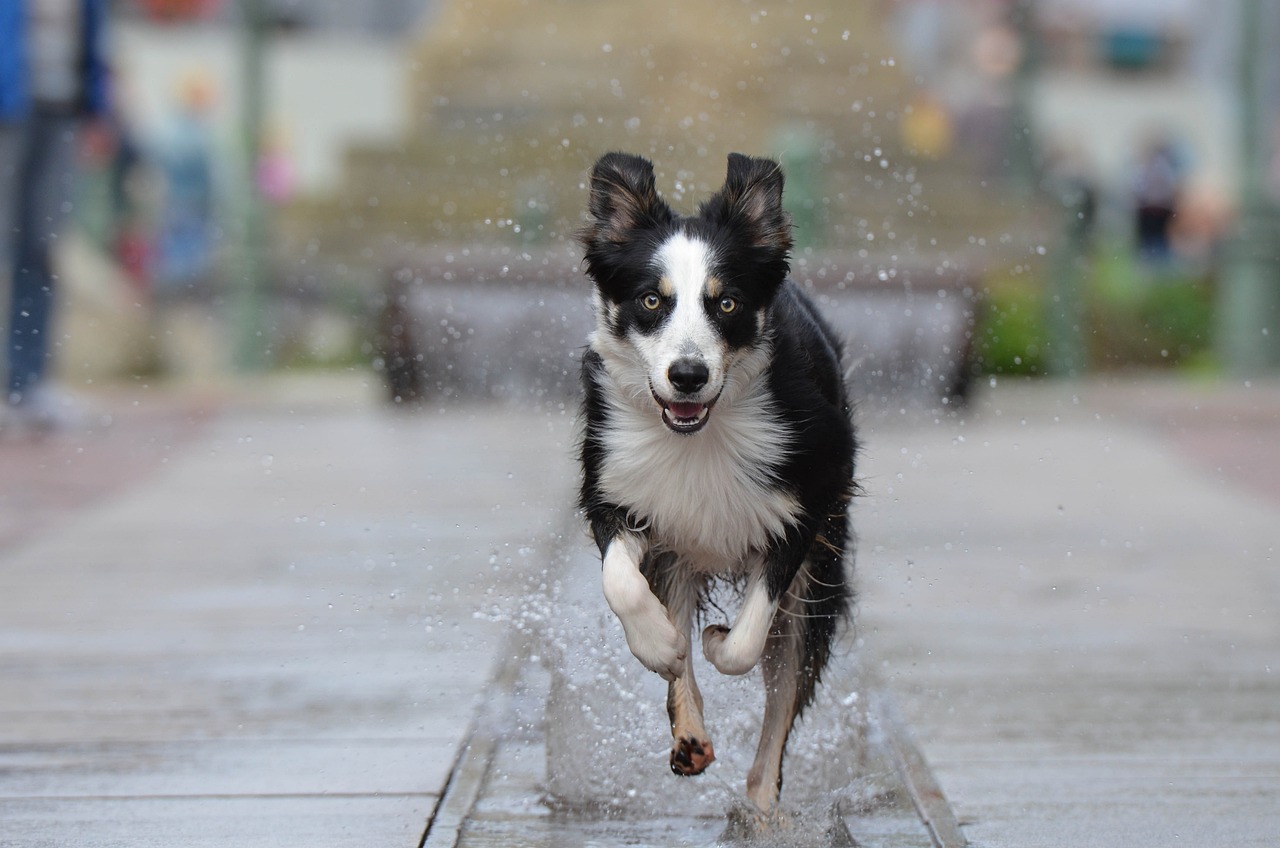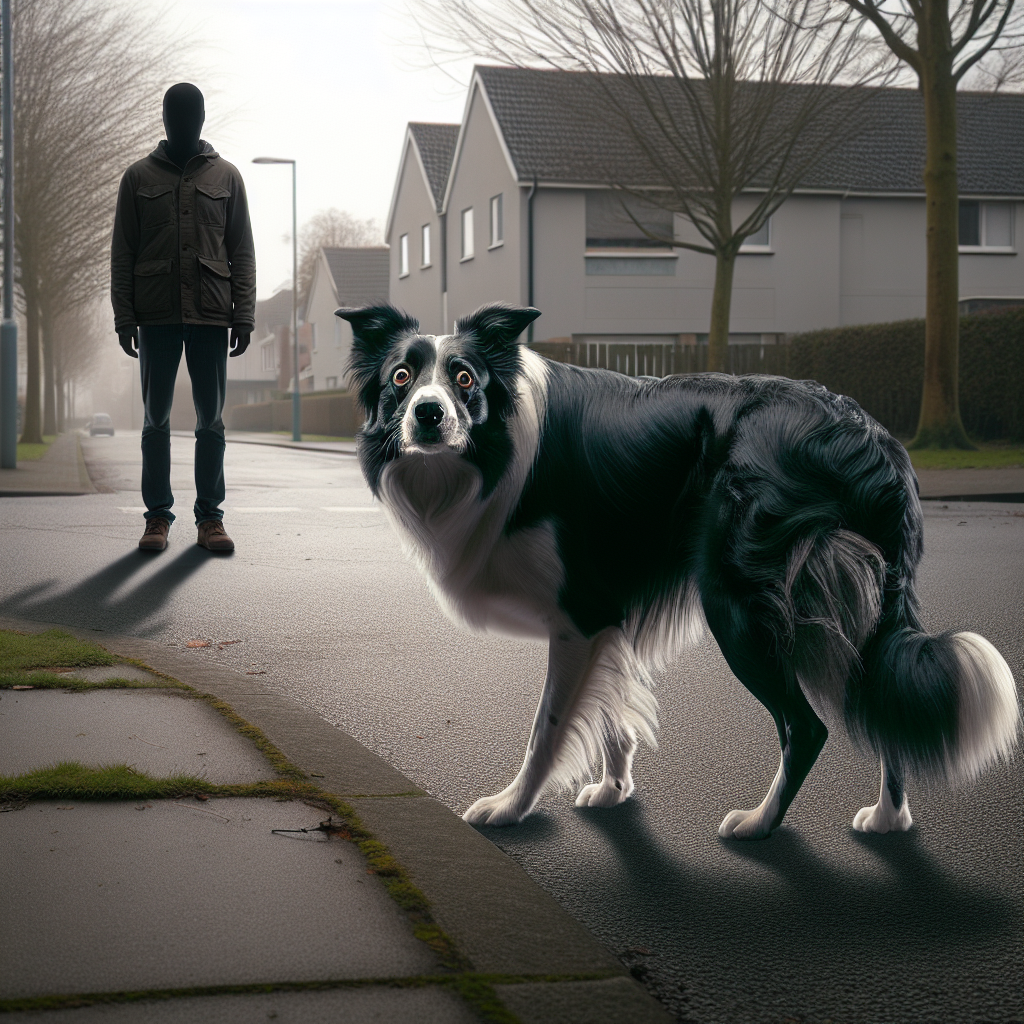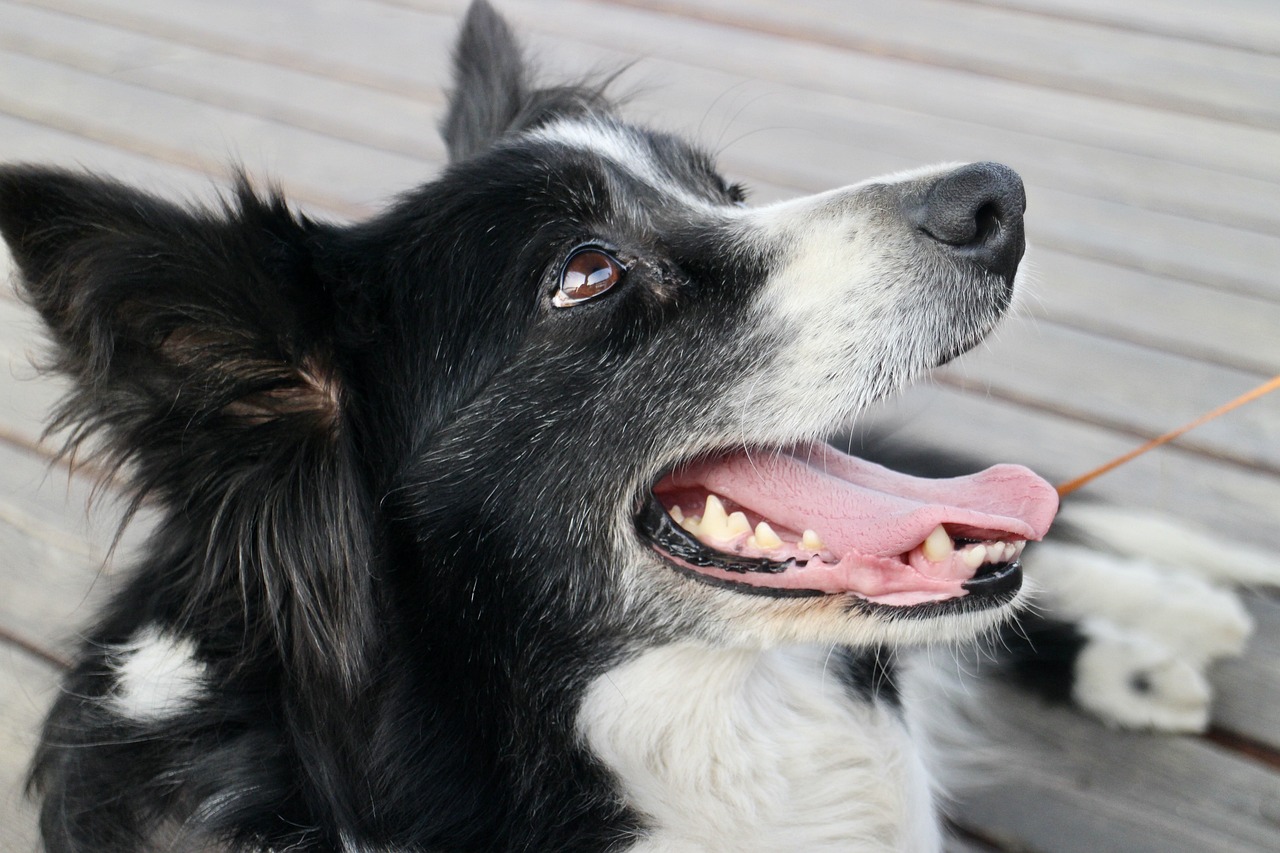Have you ever wondered why Border Collies tend to be fearful when encountering strangers? In this article, we will explore the fascinating world of Border Collies and seek to understand their fear towards unfamiliar faces. Delving into their characteristics and upbringing, we will uncover the reasons behind this behavior and provide insights on how to help these intelligent and affectionate dogs overcome their fear. Join us on this journey to unravel the fear of Border Collies towards strangers and discover the keys to building their confidence and trust.

Understanding the Fear of Border Collies towards Strangers
Border Collies, known for their intelligence and intense work ethic, are often considered one of the most agile and versatile dog breeds. However, despite their remarkable abilities, some Border Collies may exhibit fear and anxiety towards strangers. This fear response can lead to various behavioral issues, including aggression, and it is crucial for owners and dog enthusiasts to have a comprehensive understanding of this phenomenon. In this article, we will delve into the factors that contribute to Border Collies’ fear of strangers, the impact of socialization on their fear, how genetics can influence their fear response, and practical strategies to help manage and reduce this fear.
What Is the Fear Response in Border Collies?
Definition of Fear in Dogs
Fear is a natural instinct that all animals, including dogs, possess as a means of self-preservation. It is an emotional and behavioral response to situations or stimuli perceived as threatening or dangerous. When a Border Collie experiences fear, their body undergoes physiological changes, such as increased heart rate, dilated pupils, and heightened senses. Understanding the fear response in Border Collies is essential for identifying the signs and triggers of their fear-related behaviors.
How Fear Manifests in Border Collies
Border Collies may display various behavioral manifestations of fear when confronted with strangers. These can range from subtle signs of discomfort, such as avoiding eye contact or cowering, to more overt expressions of fear, including growling, barking, snapping, and even aggression. It is crucial to recognize and interpret these signals accurately to better understand your Border Collie’s emotional state in these situations.
Common Triggers for Fear in Border Collies
Several factors can trigger fear in Border Collies when it comes to strangers. These triggers can include unfamiliar environments, loud or sudden noises, unfamiliar or assertive body language from strangers, or prior negative experiences with unfamiliar individuals. Each Border Collie may have their own unique triggers, and it is essential for owners to identify and address these triggers to help alleviate their fear.
The Fight-or-Flight Response in Border Collies
When faced with a fear-inducing situation, Border Collies, like most animals, experience the fight-or-flight response. This response is an evolutionary mechanism that allows them to either confront the threat or flee from it. Some Border Collies may exhibit aggressive behaviors when afraid, while others may opt for a more passive response, attempting to escape or hide. Recognizing these responses is crucial in managing their fear and preventing situations from escalating into aggressive behavior.
Factors That Contribute to Border Collies’ Fear of Strangers
Lack of Early Socialization
One significant factor that can contribute to Border Collies’ fear of strangers is a lack of early socialization. During the critical period of development, which occurs between 3 and 14 weeks of age, it is crucial for Border Collie puppies to be exposed to various stimuli, including different people. Proper socialization during this period helps puppies acclimate to new experiences and individuals, reducing their fear response later in life. Unfortunately, if a Border Collie does not receive adequate socialization during this window, they may be more prone to fear-based behaviors when encountering strangers.
Negative Experiences with Strangers
Negative experiences with strangers can also contribute to a Border Collie’s fear response. If a Border Collie has encountered a stranger who they perceive as threatening or who has behaved in a hostile manner towards them, it can create lasting fear and anxiety. These negative experiences can vary widely, including instances of aggression, rough handling, or traumatic incidents. It is important for owners to be aware of any past negative experiences their Border Collie may have had and work to build trust and confidence with strangers.
Traumatic Events
Similar to negative experiences, traumatic events can have a lasting impact on a Border Collie’s fear of strangers. Traumatic events, such as a dog attack or a physical altercation with a stranger, can leave a deep emotional scar on a Border Collie, leading to a heightened fear response. These traumatic events may require specialized training and assistance from professionals to help the dog overcome their fear and regain their trust in strangers.
Heredity Factors
Genetics can play a role in a Border Collie’s fear of strangers. Some Border Collies may have a genetic predisposition towards fearfulness, which can be passed down from their parents. It is important to understand the lineage and breeding practices of a Border Collie before bringing them into your home. Responsible breeders prioritize temperament testing and strive to breed Border Collies with stable and confident temperaments, which can help mitigate fear-related issues.
Fear Reinforcement by Owners
Believe it or not, an owner’s response to their Border Collie’s fear of strangers can inadvertently reinforce their fear. If an owner reacts anxiously or shows signs of fear themselves when their Border Collie encounters a stranger, it can signal to the dog that the situation is indeed dangerous. This can intensify their fear response and make it more challenging for them to overcome their fear. It is crucial for owners to remain calm and composed in these situations and provide positive reinforcement to their Border Collie when they exhibit calm and relaxed behavior around strangers.
The Impact of Socialization on Border Collies’ Fear of Strangers
Critical Period for Socialization in Border Collies
During the critical period of development between 3 and 14 weeks, Border Collie puppies are highly receptive to new experiences. It is during this time that proper socialization is crucial to help them develop healthy and positive associations with people, objects, and environments. Early socialization sets the foundation for a Border Collie’s future behavior and can significantly impact their fear response towards strangers.
Exposure to Various Strangers during Socialization
To help Border Collie puppies overcome their fear of strangers, it is important to expose them to a diverse range of individuals during the socialization period. This includes people of different ages, genders, ethnicities, and appearances. By gradually introducing them to a variety of people, in positive and controlled environments, Border Collies can learn to associate strangers with positive experiences and reduce their fear response.
Positive Reinforcement Techniques
Positive reinforcement techniques are highly effective in helping to manage and reduce a Border Collie’s fear of strangers. By rewarding calm and relaxed behavior when encountering strangers, owners can reinforce positive associations and help build their Border Collie’s confidence. Treats, praise, and play can be used to reward desired behavior, helping to create positive experiences with strangers.
Desensitization and Counterconditioning
Desensitization and counterconditioning are two techniques commonly used to help Border Collies overcome their fear of strangers. Desensitization involves gradually exposing the dog to the fear-inducing stimulus in a controlled and gradual manner, while counterconditioning focuses on changing the dog’s emotional response to the stimulus by pairing it with positive experiences. These techniques, when employed correctly and with the guidance of a professional, can be incredibly effective in reducing fear and anxiety related to strangers.

Can Genetic Predisposition Influence Border Collies’ Fear of Strangers?
Genetic Factors and Fearfulness
Genetics can play a role in a Border Collie’s predisposition towards fearfulness. While it is not solely determined by genetics, certain breeding lines may have a higher likelihood of producing puppies with fearful tendencies. Understanding the genetic background of a Border Collie can help owners and breeders make informed decisions and take appropriate measures to mitigate any potential fear-related issues.
Inherited Behavioral Traits in Border Collies
Border Collies, like all dogs, inherit a combination of behavioral traits from their parents. These traits can include general temperaments, inclinations towards certain behaviors, and in some cases, fearfulness. This is why conscientious breeders prioritize temperament testing and selectively breed Border Collies with stable and confident temperaments. By breeding from lines with fewer fear-related issues, the chances of producing Border Collies with fear towards strangers can be significantly reduced.
Breeding Practices and the Role of Temperament Testing
Choosing a reputable breeder that emphasizes responsible breeding practices and conducts temperament testing is crucial when looking to bring a Border Collie into your home. Breeders who prioritize temperament testing can assess a puppy’s individual temperament and provide valuable insights into their potential fearfulness. This information allows prospective owners to make informed decisions and select a puppy with the appropriate temperament for their lifestyle.
Understanding Border Collies’ Body Language and Fear Signals
Physical Signs of Fear in Border Collies
Border Collies, like all dogs, exhibit a range of physical signs when experiencing fear. These signs may include increased heart rate, dilated pupils, a tense and stiff body posture, panting, pacing, or excessive salivation. Observing these physical signs can provide valuable cues regarding a Border Collie’s emotional state and help owners recognize and address their fear.
Facial Expressions and Vocalizations
A Border Collie’s facial expressions can also provide important insights into their fear and anxiety levels. Raised eyebrows, flattened ears, and a closed or tense mouth can indicate fear or stress. Additionally, vocalizations such as whimpering, whining, growling, or barking can also accompany fear-related behaviors. Paying attention to these facial expressions and vocalizations can help owners gauge a Border Collie’s level of fear and tailor their response accordingly.
Body Posture and Tail Position
Body posture and tail position are significant indicators of a Border Collie’s fear. When afraid, a Border Collie may have a lowered body posture, with their tail tucked between their hind legs. They may also exhibit a stiff or rigid body, leaning away from the perceived threat. Understanding and interpreting these subtle body language cues can help owners better understand their Border Collie’s emotional state and respond appropriately.
Avoidance and Defensive Behaviors
When faced with a fear-inducing situation, Border Collies may exhibit avoidance or defensive behaviors. They may try to physically retreat from the situation, attempt to hide behind objects or seek comfort from their owner. Other defensive behaviors can include growling, snapping, or lunging. It is important for owners to recognize these behaviors and provide a safe and supportive environment to help their Border Collie feel secure.

Common Behavioral Manifestations of Fear in Border Collies
Growling and Barking
Growling and barking are common behavioral manifestations of fear in Border Collies. When a Border Collie feels threatened or afraid, they may growl or bark as a means of communicating their discomfort. Growling and barking serve as warning signals to deter potential threats and establish personal boundaries. It is crucial for owners to pay attention to these warning signs and address their Border Collie’s underlying fear to prevent aggression towards strangers.
Snapping and Lunging
Snapping and lunging are more pronounced fear-based behaviors that Border Collies may exhibit when overwhelmed by fear. These defensive behaviors are attempts to establish distance from potential threats and create a sense of safety. While these behaviors can be alarming, it is essential to understand that they stem from fear rather than aggression. Owners should prioritize managing their Border Collie’s fear response appropriately and seek professional help if needed.
Freezing and Trembling
Freezing and trembling are often seen in Border Collies experiencing fear. When confronted with a fear-inducing stimulus, a Border Collie may freeze in place, almost becoming statue-like. This response is an instinctive attempt to blend in with their surroundings and avoid detection. Trembling and shaking may also accompany freezing and can indicate a heightened level of fear or anxiety. It is important for owners to create a safe and calm environment for their Border Collie to help alleviate these fear-related behaviors.
Attempts to Escape or Hide
When overwhelmed by fear, a Border Collie may attempt to escape or hide from the perceived threat or source of fear. They may seek out small, enclosed spaces where they feel secure or try to physically remove themselves from the situation. Observing these escape or hiding behaviors is crucial, as it indicates a high level of fear and stress. Owners should provide a safe and quiet space for their Border Collie to retreat to, ensuring they have a sense of control in fear-inducing situations.
The Role of Fear in Border Collies’ Aggression towards Strangers
Fear as a Defensive Mechanism
Fear plays a significant role in a Border Collie’s aggression towards strangers. When a Border Collie feels threatened or afraid, their natural response is to protect themselves. Aggression can arise as a defensive mechanism, aimed at establishing boundaries and deterring potential threats. It is essential for owners to understand that aggressive behaviors towards strangers often stem from fear rather than inherent aggression.
Hierarchy of Aggressive Behavior
Aggressive behavior towards strangers can vary in intensity and severity. Border Collies may employ a hierarchy of aggressive behaviors, starting with mild warnings such as growling or barking and potentially escalating to more severe behaviors like snapping or lunging. Understanding this hierarchy can help owners intervene early and implement appropriate management and training strategies to prevent aggression towards strangers.
Fear-Based Aggression Triggers
Fear-based aggression in Border Collies towards strangers can have specific triggers. These triggers can vary depending on the individual dog and their unique experiences and fears. Common triggers may include direct eye contact, sudden movements, reaching towards the dog, or invasion of personal space. Identifying and addressing these triggers is crucial in managing a Border Collie’s fear-based aggression and keeping both the dog and strangers safe.
Preventing Aggression Escalation
Preventing the escalation of aggression is a vital aspect of managing a fear-based Border Collie’s behavior towards strangers. This can be achieved through proper training and socialization, as well as by providing a safe and controlled environment with clear boundaries. Actively managing a Border Collie’s fear and anxiety through positive reinforcement techniques, desensitization, and counterconditioning is key to reducing the likelihood of aggression towards strangers.

How to Manage and Reduce Border Collies’ Fear of Strangers
Creating a Safe and Enriching Environment
Creating a safe and enriching environment for a fear-prone Border Collie is essential in managing and reducing their fear of strangers. Providing a secure space with plenty of mental and physical stimulation can help alleviate their overall anxiety levels. This includes ensuring they have a designated “safe space,” engaging them in stimulating activities, and offering regular exercise to help release any pent-up energy or stress.
Positive Reinforcement Training Techniques
Positive reinforcement training techniques are highly effective in managing and reducing a Border Collie’s fear of strangers. Reward-based training, where desired behaviors are reinforced with treats, praise, or play, helps create positive associations with strangers. By rewarding calm and relaxed behavior in the presence of strangers, owners can gradually build their Border Collie’s confidence and reduce their fear response.
Gradual Exposure to Strangers
Gradual exposure to strangers is an essential component of helping a fear-prone Border Collie overcome their fear. Using controlled environments, owners can gradually increase the proximity and duration of their Border Collie’s exposure to strangers. This gradual approach allows the dog to acclimate to strangers at a pace that feels comfortable for them, preventing overwhelming fear and facilitating the development of positive associations.
Implementing Counterconditioning and Desensitization
Counterconditioning and desensitization techniques can be invaluable in reducing a Border Collie’s fear of strangers. By pairing the presence of strangers with positive and rewarding experiences, such as treats or play, the dog’s emotional response to strangers can change over time. Desensitization, on the other hand, involves gradually exposing the Border Collie to mild versions of their fear-inducing stimulus, gradually building up their tolerance and reducing their fear response. These techniques should be implemented under the guidance of a professional dog trainer or behaviorist for optimal results.
The Importance of Seeking Professional Help for Fearful Border Collies
While there are various strategies and techniques that owners can employ to help manage and reduce a Border Collie’s fear of strangers, sometimes professional help is necessary. Fear-related behaviors can be challenging to address, and seeking assistance from a qualified dog trainer or behaviorist who specializes in fear and anxiety is highly recommended. These professionals can provide personalized guidance, create individualized behavior modification plans, and ensure the safety and well-being of both the Border Collie and the strangers they encounter.

Case Studies: Successful Strategies for Overcoming Border Collies’ Fear of Strangers
Real-life case studies can provide valuable insights into successful strategies for overcoming Border Collies’ fear of strangers. Each case is unique, and the strategies employed can vary based on the dog’s individual needs and circumstances. These case studies highlight the importance of a holistic approach, combining proper socialization, positive reinforcement techniques, desensitization, and counterconditioning to achieve meaningful progress in managing and reducing fear-related behaviors.
Conclusion
Understanding the fear of Border Collies towards strangers is crucial for owners and dog enthusiasts. By recognizing the factors that contribute to their fear, interpreting their body language and fear signals, and implementing effective management and training strategies, owners can help their Border Collies overcome their fear and live happier lives. It is important to remember that fear-related behavior requires patience, consistency, and sometimes professional guidance. With the right approach and support, fearful Border Collies can learn to navigate the world of strangers with confidence and ease.
